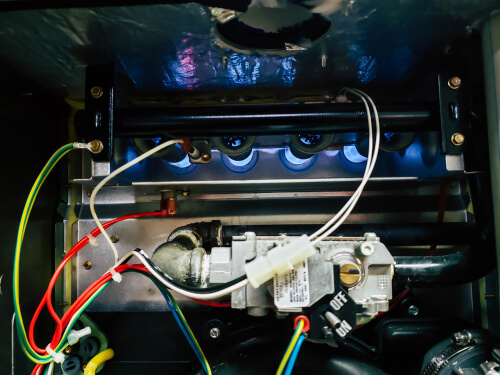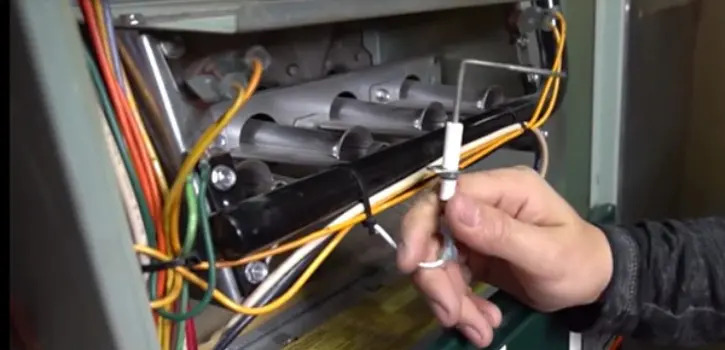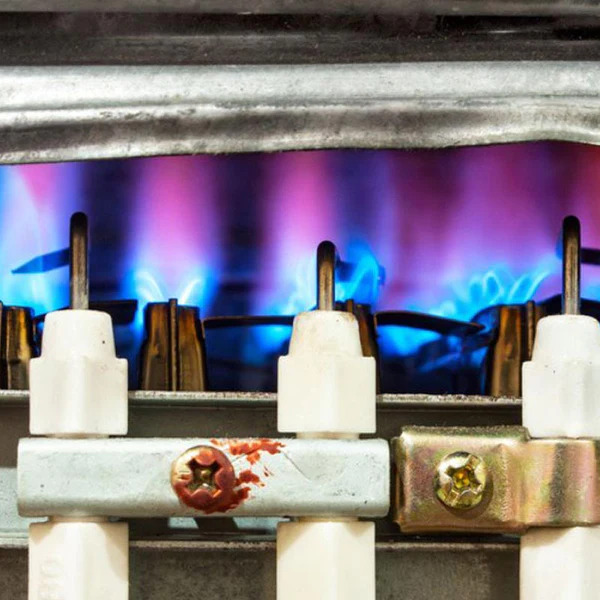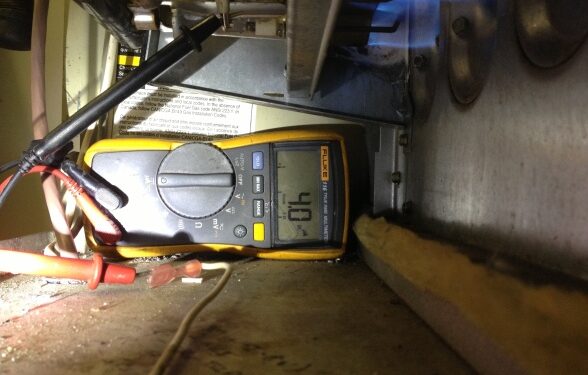How to Clean a Furnace Flame Sensor in 5 Easy Steps
A FURNACE FLAME SENSOR is a safety device found in gas-fired furnace systems. It is a small metal rod that detects the presence of a flame in the combustion chamber and sends a signal to the furnace’s control board to indicate whether the flame is burning properly. If the sensor does not detect a flame or detects an irregular flame, it will shut off the gas supply to the furnace to prevent a potential gas leak or explosion. It is also used to monitor the pilot light in older furnaces.
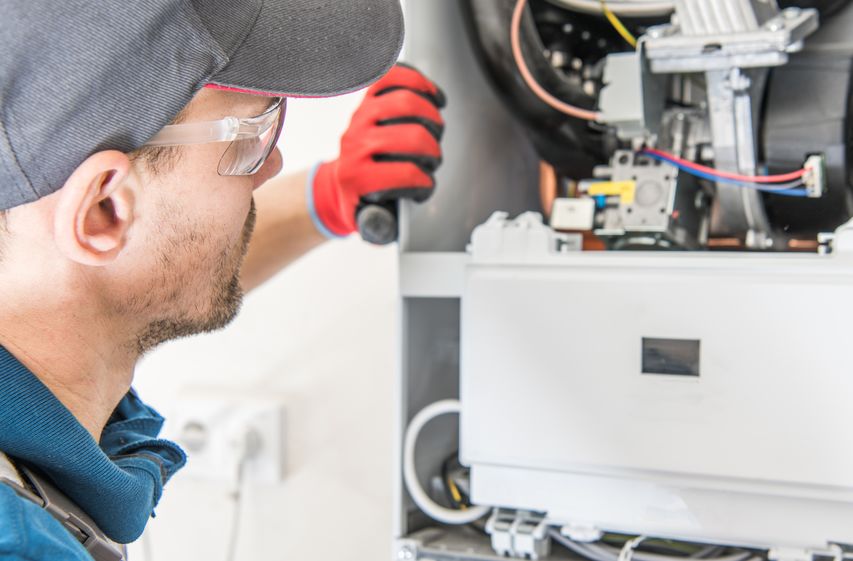
A Furnace Flame Sensor can get dirty
A furnace flame sensor can get dirty due to a buildup of dust, dirt, and other debris in the furnace system. Over time, this debris can settle on the sensor, interfering with its ability to detect the flame properly. Additionally, if the furnace’s air filter is not changed frequently enough, dirt and debris can accumulate in the system and eventually make their way to the flame sensor. The accumulation of dirt and debris on the sensor can cause it to malfunction, which could lead to the furnace shutting off unexpectedly.
Another reason the flame sensor becomes dirty is due to the accumulation of “black soot” and mineral buildup on the sensor. This can happen if the furnace is not properly maintained or if the burner orifices are clogged.
If the sensor is dirty, it will not be able to detect the flame properly, resulting in the furnace shutting off. It is important to clean the sensor regularly to ensure it is working correctly. If you notice that the furnace flame sensor is dirty, you can search for FLAME SENSOR REPAIR NEAR ME and find the best service center near you.
How to clean a furnace flame sensor in 5 easy steps
Cleaning a furnace flame sensor is a simple process that can be done in 5 easy steps. Read on to learn how.
Reason #1
Turn off the power to the furnace
Before you begin cleaning the sensor, make sure to turn off the power to the furnace by switching off the circuit breaker. The power to the furnace can be turned off by switching off the circuit breaker responsible for the furnace. Depending on the make and model of the furnace, this may be located in the main electrical panel, or there may be a separate, dedicated panel for the furnace. It is important to ensure the power is off before conducting any maintenance or repairs on the furnace.
Reason #2
Locate the flame sensor
The flame sensor is typically located near the burner assembly. It can often be found mounted on the insulated side of the combustion chamber and is connected to the control board with a two-wire lead. It is usually cylindrical, with a metal or ceramic body.
Reason #3
Clean the flame sensor
Use a soft-bristled brush or a piece of steel wool to gently scrub the flame sensor. Be sure to remove any dirt, dust, or debris that may have accumulated on the sensor. Additionally, you can clean the flame sensor by following the following steps:
- Turn off the furnace and let it cool down.
- Locate the flame sensor – it should be near the burner assembly.
- Use an emery cloth to carefully scrub the surface of the flame sensor.
- Use a damp cloth to clean away any dust or debris from the flame sensor.
- Dry the sensor with a clean cloth.
- Reattach the flame sensor to the furnace.
- Turn on the furnace and test it to ensure it is working correctly.
Reason #4
Test the flame sensor
To test the flame sensor, first, ensure that the power to the furnace is turned off. Then, carefully remove the flame sensor from its mount and use a multimeter to measure the resistance of the sensor. The resistance should be within the manufacturer’s specifications. If not, the sensor should be replaced. If the resistance is within spec, then the sensor should be cleaned with a brush or sandpaper and re-tested. If the resistance is still within spec, the furnace can be reassembled and tested.
Reason #5
Repeat the cleaning process as needed
Depending on the environment, the sensor may need to be cleaned regularly. If the furnace is shutting off frequently, it may be an indication that the sensor needs cleaning.
It is important to note that if you are not comfortable with the steps or do not have the proper tools, it is best to contact a professional to clean the sensor for you.
Are you looking for a professional to have the furnace flame sensor cleaned? You can go online and search for FLAME SENSOR REPAIR SERVICES LOS ANGELES. You will find a list of service providers near you.
Advantages of cleaning a furnace flame sensor
There are several advantages to cleaning a furnace flame sensor regularly:
Improved Safety
A dirty flame sensor can cause a furnace to shut off unexpectedly, posing a safety hazard if not addressed. Cleaning the sensor ensures that it is functioning properly, thus helping to prevent potential gas leaks or explosions.
Increased Efficiency
A dirty flame sensor can cause a furnace to run less efficiently, resulting in higher energy bills. Cleaning the sensor can help ensure that the furnace is running at optimal efficiency, thus saving money on energy costs in the long run.
Extended Furnace Life
A dirty flame sensor can cause a furnace to wear out faster, which can lead to costly repairs or replacements. Cleaning the sensor regularly can help extend the life of the furnace.
Better air quality
A dirty flame sensor can cause a furnace to release dirty air that can be unhealthy for people with respiratory problems. Cleaning the sensor can help ensure that the furnace is releasing clean air.
Reduced need for repairs
A dirty flame sensor can cause a furnace to malfunction and need repairs. Cleaning the sensor can help reduce the need for repairs, and save you money on service calls.
Concluding remarks
In conclusion, cleaning a furnace flame sensor is a simple and important task that can help ensure the safety and efficiency of your furnace. By following the five easy steps outlined in this blog, you can clean your flame sensor and prolong the life of your furnace. A dirty flame sensor can cause a furnace to shut off unexpectedly and release dirty air, increase energy bills, and cause the furnace to wear out faster, leading to costly repairs or replacement. Regular cleaning of the sensor can help prevent these issues and save you money in the long run. If you are not comfortable with the steps or do not have the proper tools, it is best to contact a professional to clean the sensor for you.

